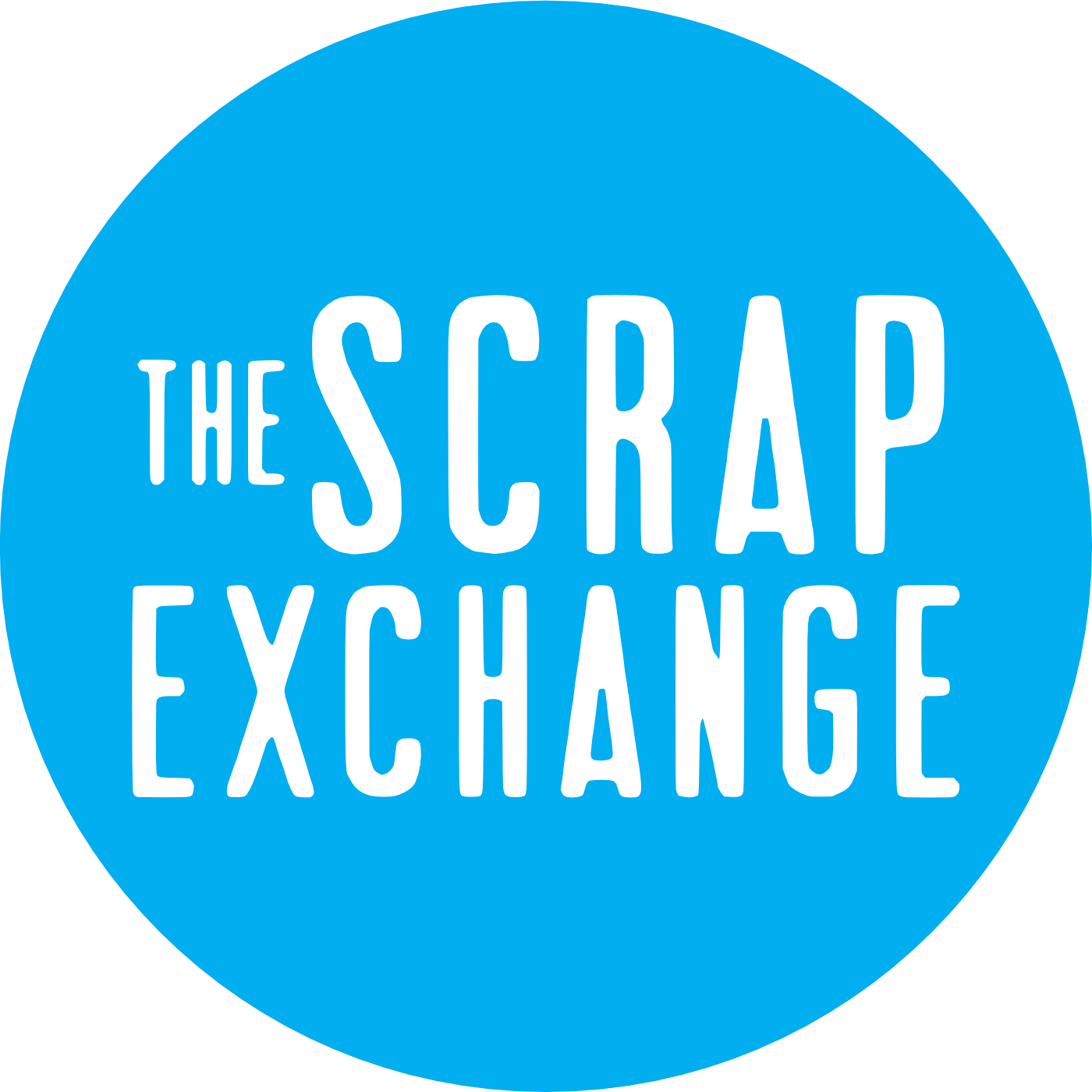Frequently Asked Questions
What is The Scrap Exchange?
The Scrap Exchange is a Creative Reuse Center — we are a 501(c)(3) nonprofit organization whose mission is to promote creativity, environmental awareness, and community through reuse.
We collect materials from hundreds of individuals, businesses, industries, and municipal sources and distribute those materials through our retail store in Durham, North Carolina as well as through workshops, parties, and outreach events across the Southeast.
The Scrap Exchange creates a win-win-win situation for everyone involved — our donors are eligible for a tax deduction for the value of the items they donate; community members have access to hard-to-find, affordable materials; and usable materials are kept from entering the waste stream.
Where do you get your materials?
We collect materials from several industries within a 100-mile radius of The Scrap Exchange. Materials include foam, paper, fabric, zippers, buttons, test tubes, and much more. We also take in contributions from individuals. We welcome craft materials, art supplies, vintage goodies, and other unique items. We take in more than 500 drop-off donations each year.
What materials do you accept?
Please visit our Material Donations page for information about donating materials and what we are able to accept.
What do you do with the materials you collect?
Materials are sold in our retail store and are also featured in a variety of creative arts programs and workshops. Our outreach program travels to large-scale community festivals and events where we provide hands-on, creative arts activities. We also travel to schools for classroom workshops and after-school activities, and we host workshops and parties at our Creative Reuse Center.
What are your store hours?
Both retail stores are open 10:30am – 6pm Tuesday – Sunday.
Where are you located?
Our address is:
Lakewood Shopping Center
2050 Chapel Hill Road
Durham, NC 27707
Didn’t you used to be located at … ?
From our opening in July 1991 until December 1999, we occupied several different locations in Durham’s Northgate Mall.
In addition to the Northgate Mall store, we also operated a store and workshop space at Stonehenge Market on Creedmoor Road in Raleigh from September 1992 to September 1993, and then sold materials at the Atlantic Flea Market in Raleigh, from September 1993 to summer 1995.
From January 2000 until May 2011, we occupied 13,000 square feet of space in Liberty Warehouse, a former tobacco warehouse in the Central Park district of downtown Durham. That location included 8,000 square feet of retail store space and 5,000 square feet of warehouse storage space. In May 2011, a portion of the roof of the Liberty Warehouse collapsed following a storm. The entire 200,000 square foot building was condemned by the City of Durham, and all tenants were forced to relocate.
Following the roof collapse at Liberty Warehouse, we leased space in the Cordoba Center for the Arts at 923 Franklin St. from June 2011 until August 2014.
In December 2013, we purchased our own building at 2050 Chapel Hill Road in Durham. The property includes a 23,000 square foot building (formerly the Center Theater and the Duke Surplus store) with 2.4 acres of ground. We moved into this space in August 2014.
What is included in your facility?
Our current space includes our creative reuse retail store; Make N’ Take Room where we host parties; Design Center where we hold our workshops and classes; Cameron Gallery offering exhibits of art made from reused and recycled products; Artist Marketplace selling up-cycled products from local artists and craftspeople; and office space out of which we run our operation. Our Thrift Store is located across the shopping center and offers media, clothing, shoes, housewares, decor, frames, and more for sale.
What do you do with the money you make selling materials?
Store sales and income generated by fee-for-service programming supports our operation and allows us to collect materials from businesses and individuals in our area, and to process those materials and make them available to the public. Sales also cover labor costs for our Scrap Staffers.
How did The Scrap Exchange get started?
In 1991, a woman named Chris Rosenthal and a group of supporters including nationally known environmental artist Bryant Holsenbeck and educator Joe Appleton started The Scrap Exchange. Chris was a teacher who wanted great materials for use in her classroom. She had previously worked for an organization in Australia called The Reverse Garbage Truck and patterned The Scrap Exchange on that program.
Are you all volunteers?
We currently have over 50 paid staff members and contract workers without whom the Scrap Exchange would not be possible. Volunteers are, however, an extremely valuable and essential addition to our operations! From core volunteers who come several days a week to large groups that come annually, we would be hard pressed to keep up with material processing demands without them.
Where does The Scrap Exchange get its funding?
As an organization, The Scrap Exchange is largely self-sustaining, with nearly 90% of our annual budget coming from income generated through store sales and fee-for-service programming. The money we make through retail sales and outreach programs pays for day-to-day operations (salaries, rent, utilities, vehicles, etc.) and allows us to continue collecting materials and providing programming that fulfills our mission.


